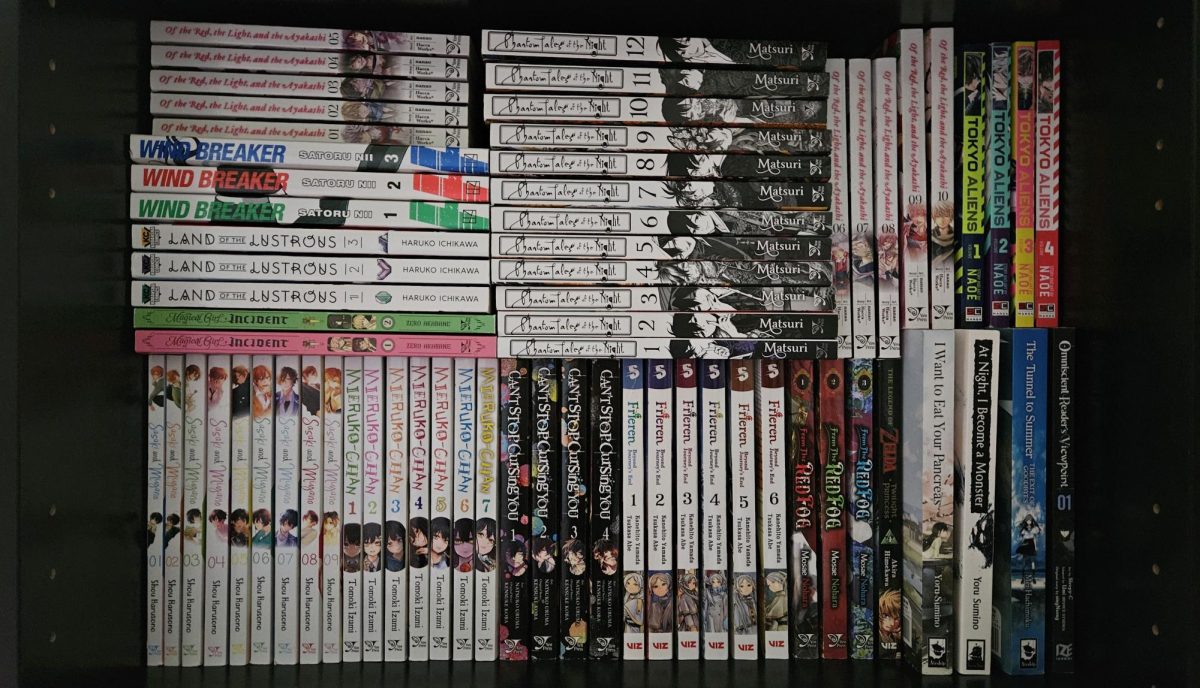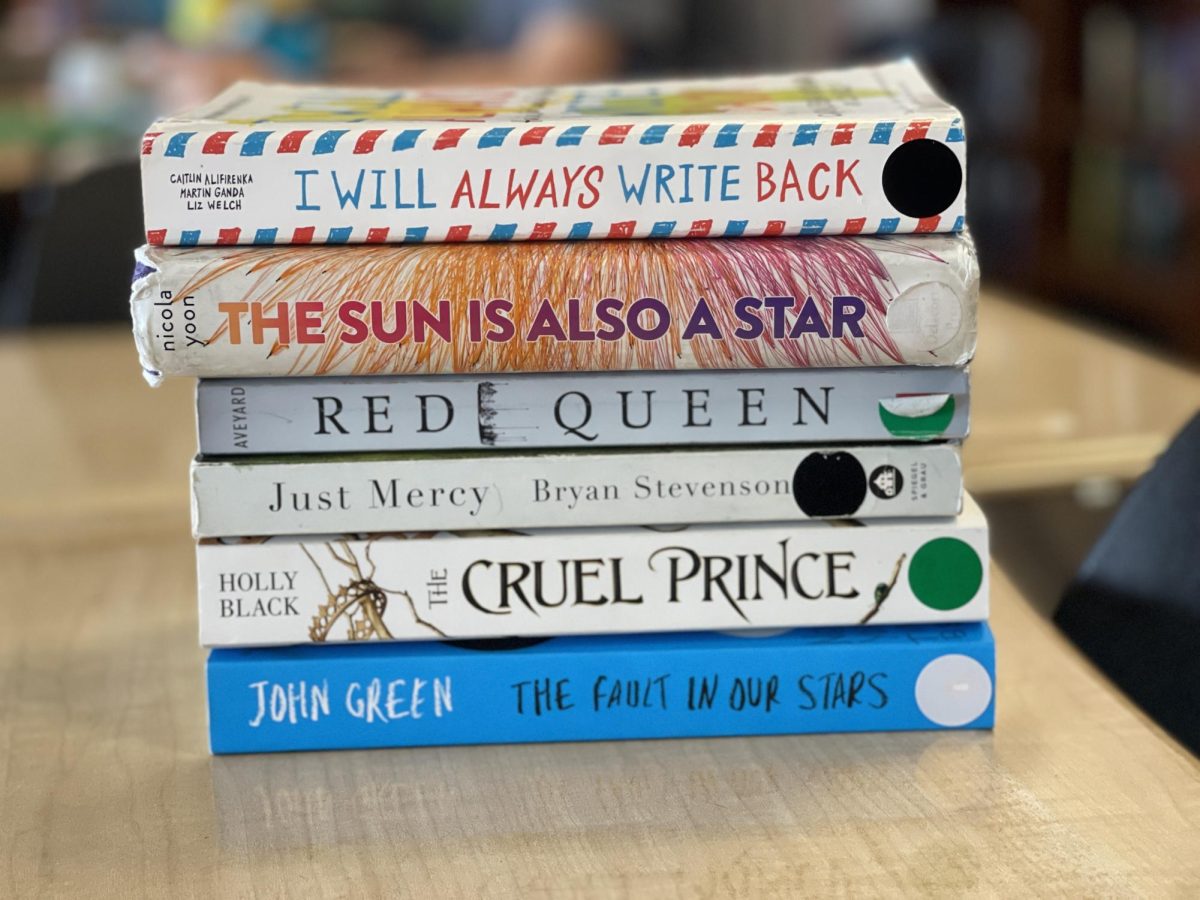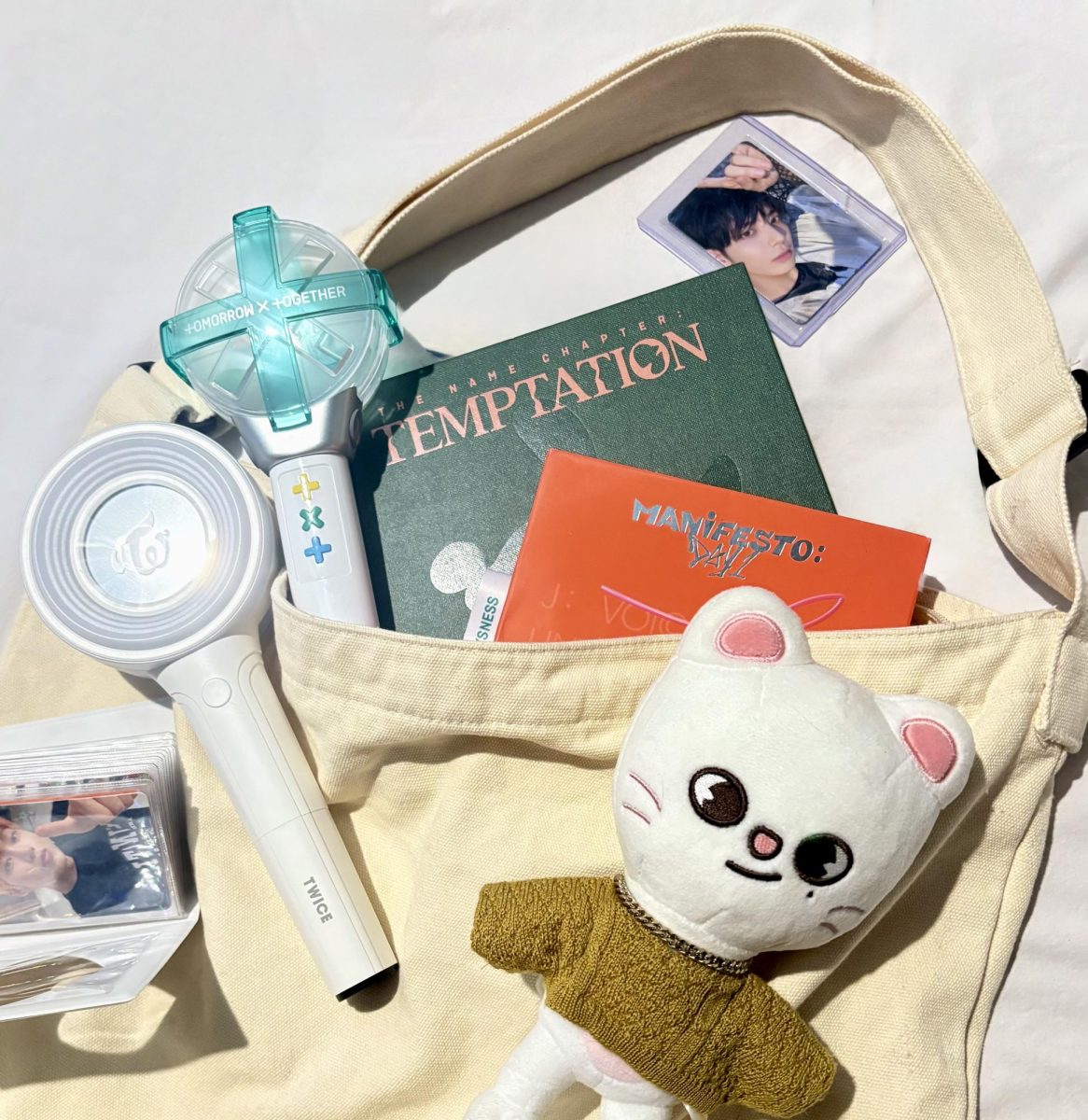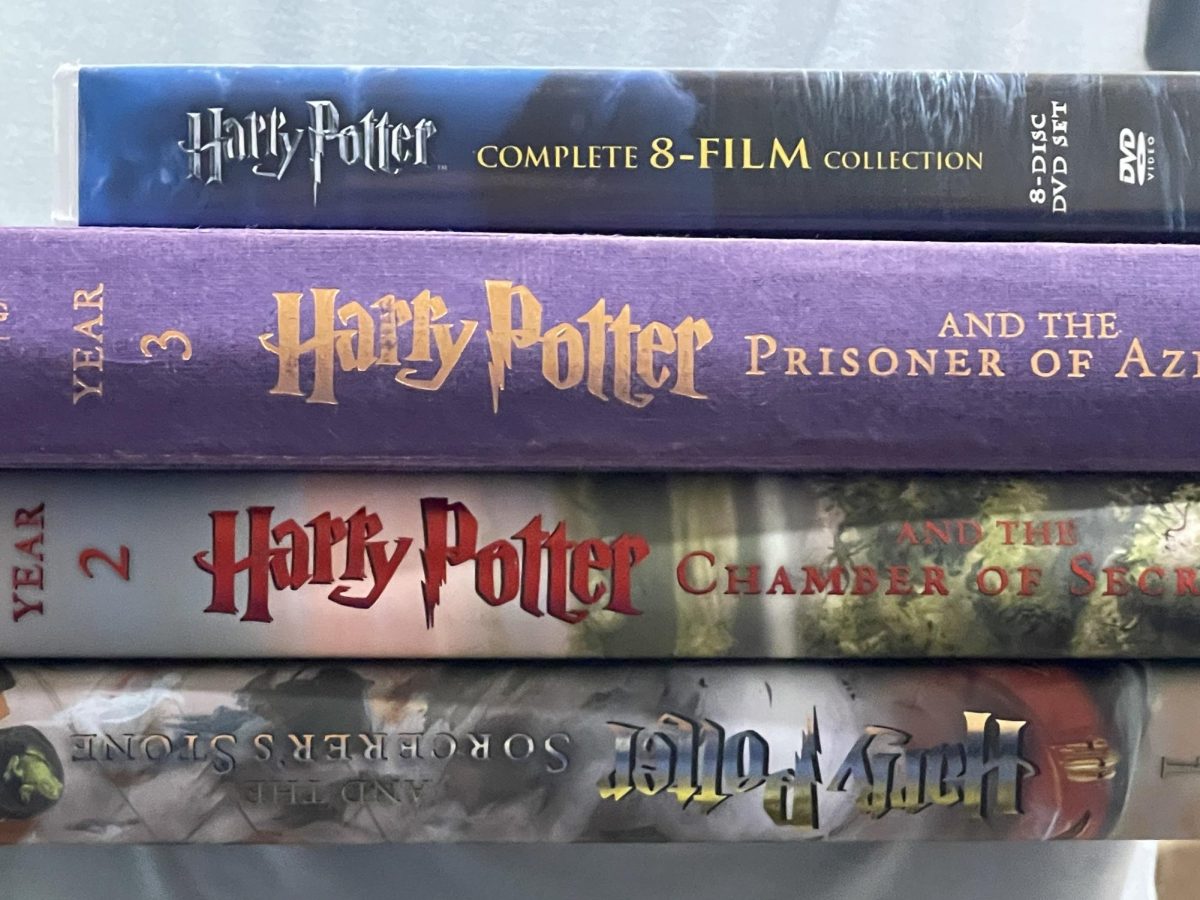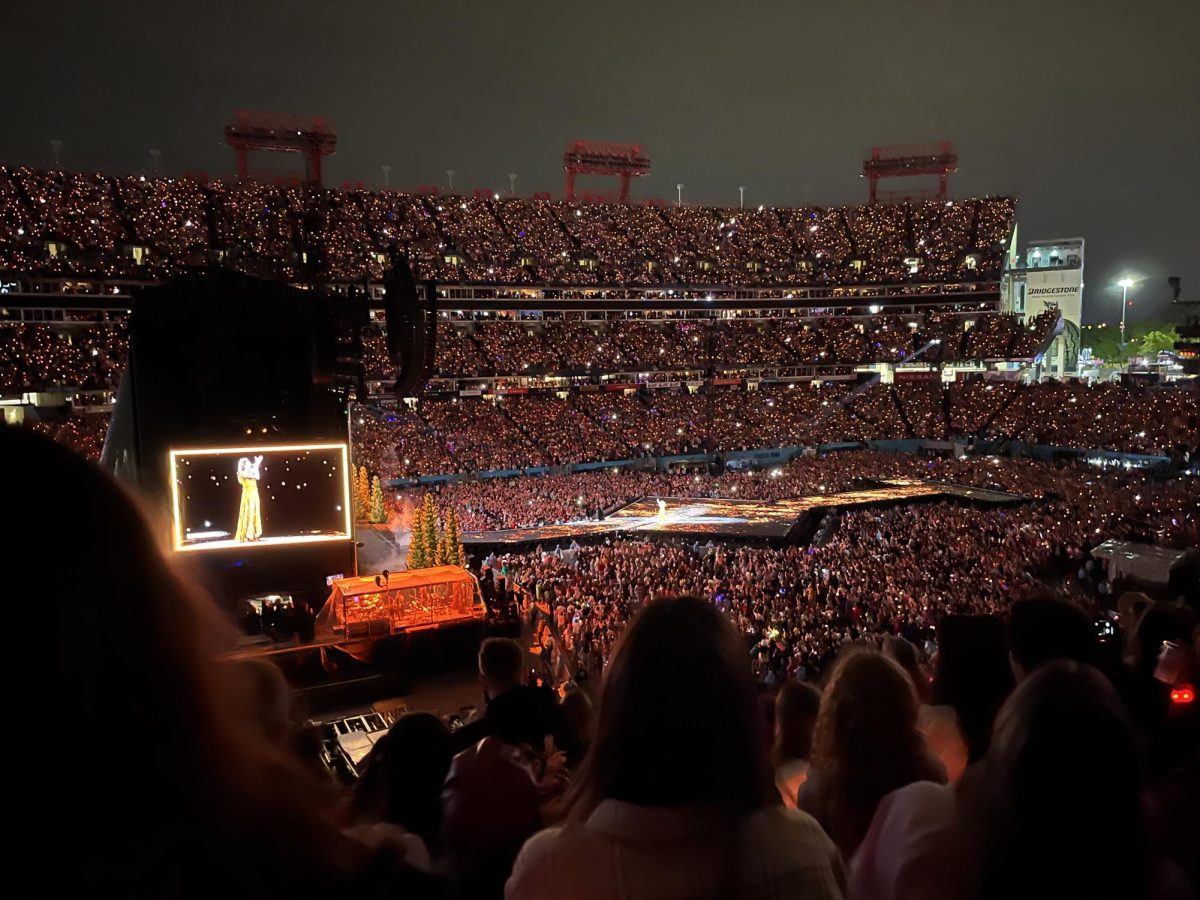Community School of Davidson (CSD) AP Literature student, Ella McDavitt (‘25), opens “1984,” a traditional western novel, during scheduled reading time in her AP Literature class. A required book, “1984” has the world set in a dystopian future of a totalitarian society. The main character, Winston Smith, who is a worker of the Ministry of Truth, is responsible for rewriting the history of the past. “1984” explores Winston’s story in his attempts to rebel against the Party.
Ella McDavitt was drawn not only to the subject of the book but also its lessons.
“It was a really good book. It showed how totalitarianism would affect us. It gave us a whole new view on what the future could look like,” Ella McDavitt said.
While “1984” is a popular classic in the West, there are other books out there (that aren’t commonly read in the West) that share common themes, styles and meanings but are not as commonly read, because they are not mainstream and easily recognized.
Japanese light novels are one example. This book style has shorter paragraphs and a lower word count compared to Western novels. Yet compared to web novels that are popular in China and South Korea, web novels are released as chapters on the web until its completion.
Looking back in history, it is books, through their creation to modern day adaptations, that captivate and entice readers. Books have evolved over time, ranging from scrolls and pamphlets to the everyday, more common codex format that is popular today.
Furthermore, with the invention of technology, ebooks and audiobooks offer alternatives, too. And with the arrival of technology, books from around the world are available to students no matter where they live.
However, not all books, styles and formats are the same. Other styles, such as light novels, web novels, manga, manhua, and manhwa, all from East Asia, have a place in the high school classroom.
East Asian Novels
As a branch of Japanese novels, Light novels are fictional literature novels that appeal to teens and young adults in Japan. Light novels have illustrations that are usually drawn in a manga art style. They tend to be condensed in short paragraphs, having a lower word and page count compared to a regular novel. Light novels are quite popular, with many receiving adaptations in manga and anime.
Web fiction are works of fiction displayed on the web. Web novels are a variant of that label. As opposed to modern novels written from the beginning to end, and ready to publish, web novels are published as installments or chapters until they reach their epilogues. Some web novels have the option of being pay-to-read access with the rest being free-to-read. Web novels have dominated across China as they have produced numerous works on the internet. While in South Korea, web novels have flourished since 2010.
East Asian Graphic Novels
Manga (pronounced man-ga), are comics or graphic novels that were invented in Japan. Manga are read from right-to-left and tend to be printed in black-and-white. They are published in large magazines that feature many stories, displayed as single episodes that continue in the next issue. The accumulated chapters are compiled and published into paperback volumes.
As for popularity, if a manga explodes in popularity, they may receive an anime or live-action adaptation.
Manga have many genres and demographics. Their demographics are more specific compared to Western media. For example, Shoujo (also known as Shojo) is geared towards younger female audiences, while Josei appeals to older, adult female audiences.
The most notable genres from Manga are Shounen (aka Shonen), manga aimed towards young boys, and Isekai, manga that has the main cast transported to another world, that usually presents itself as a fantasy or video game genre, where they have to adapt to the rules of that world and survive.
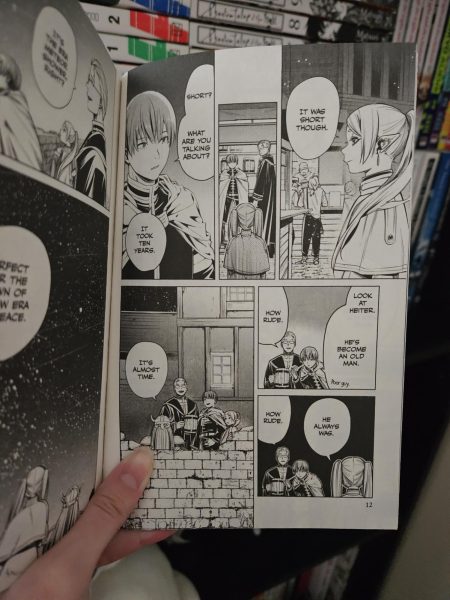
(Jaelyn Nguyen)
Manhua, derived from the Japanese phrase, manga, are comics produced by China. Manhua tends to have more realistic drawings. Most manhua are presented in full color, compared to manga being drawn in black and white. They are published in full color digitally and printed.
There are also formatting differences depending on where the manhua originates. In mainland China, the original Chinese text is displayed horizontally, read left-to-right like a Western comic or Korean manhwa. In Hong Kong and Taiwan, the text is placed vertically, top-to-bottom, and read right-to-left like Japanese manga. Digital manhua are posted as webcomics and are formatted by scrolling up and down, similar to manhwa.
Manhwa are graphic novels that originate from Korea and stem from the Japanese term manga. Manhwa art usually has realistic body proportions, yet unnatural faces when it comes to drawing characters. Their art style varies from being very simple to detailed at times with clothing and backgrounds. Manhwa tends to be drawn in color on the internet, yet is printed in black and white. Manhwa is read similar to manhua, from left-to-right, and are both structured using a scroll-to-read format.
A majority of manhwa are launched as webtoons. Popular genres consist of reincarnation, LitRPG, murim (world of martial arts and artists), villainess, action, romance and thriller.

(Jaelyn Nguyen)
East Asian Animation
Anime is hand-drawn animation created by Japan. In Japan, anime is used to describe all animated works. Anime combines graphic art, characterization and cinematography, along with other techniques, to produce animated works of art.
Anime’s focus sets it apart. Anime tends to focus on details of settings and the usage of “camera effects.” Art styles are diverse and character proportions and features vary. Anime can be broadcasted through television, released online, and gain live stage adaptations. They are often adaptations of manga, light novels and video games.
Donghua is the term used for all animation produced in China. Donghua can be split into two categories.
The first type has traditional 2D cartoons and modern 3D CG animation issued through cinemas, DVDs, and displayed on television. These types are created through the use of advanced technology, with low cost labor, produced by financially sufficient corporations.
The second type has flash animations made by corporations or sometimes individuals. These animations range from low to high quality, and are displayed to the public on various platforms.
Aeni is animation produced by South Korea. While the word aeni derives from the English word for “animation,” aeni is usually referred to Japanese animation, yet it also can refer to Korean animation in general.
Through the combining of webtoon and animation, the term webtoonimation was created. In 2020, Korea received changes in the animation market and started producing animations that stemmed from webtoons. In December 2022, popular webtoon, “Lookism,” received an animated series that was launched on Netflix. In 2024, author Yaongyi’s webtoon, “True Beauty,” was adapted and released on Crunchyroll. Animation adaptations for “The Boxer” and “Terror Man” are in the process of being adapted.
When McDavitt was asked if she had ever read such a novel, her reply was a common one amongst Western students.
“I’ve never read a light novel,” McDavitt said.
What does it mean to student readers?
McDavitt’s comment confirms just how little an exposure East Asian novels have at schools like CSD.
Reading books from other cultures allows for diversity to flourish. It enables interests in reading, advances literacy skills and has people come together to appreciate and connect to different cultures.
Knowledge of the different styles and formats of popular East Asian literature and animation allows readers to admire the variation of forms of art around the world.

